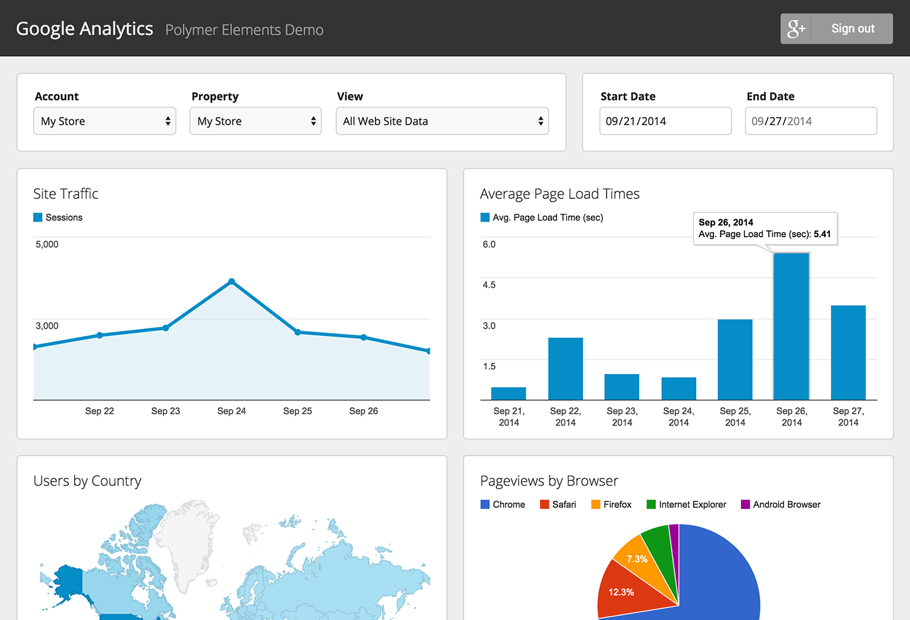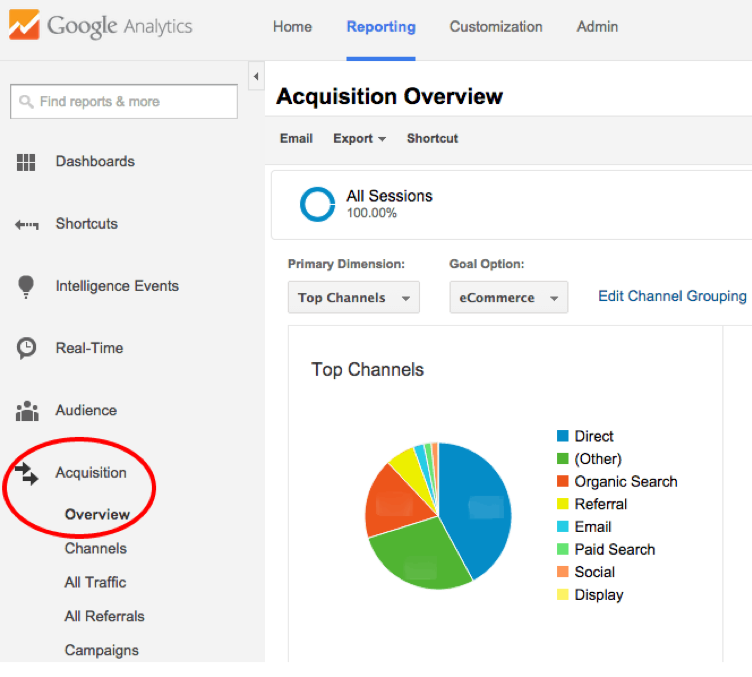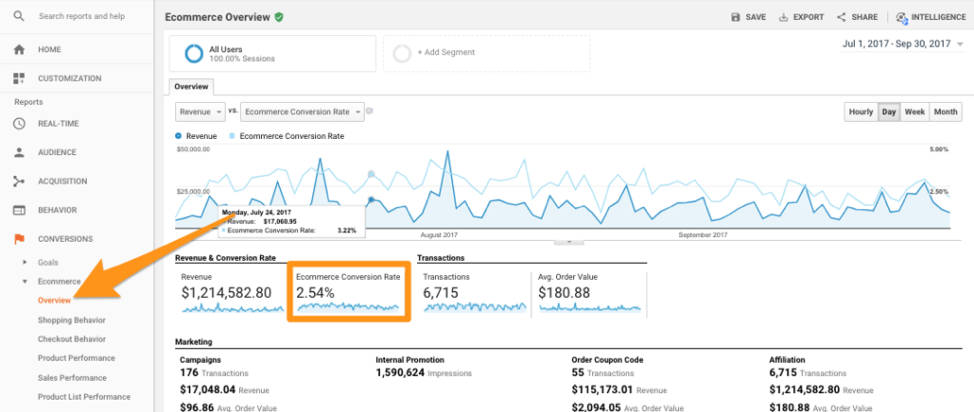

Updated December 12, 2024
There are two main purposes behind every website: maximize traffic and boost engagement. The more traffic your website gets, the better it is. Online businesses evaluate the performance of their website through tools. It is important to analyze and keep track of your website's performance so that you improve it, as needed.
Updated 02/10/2023
Just like any business, you probably invested a lot of time and money to develop your website and its associated online applications. You may have hired a dedicated team to write high-quality content or to design graphics, navigation, and layout.
Looking for a Web Design agency?
Compare our list of top Web Design companies near you
There is no doubt that these are important steps to get the most of your website, but you need to pay equal attention to maximize your return on investment (ROI).
This is possible by measuring and analyzing your website’s performance via key performance indicators (KPIs).
The specific performance metrics you track depend on the nature of your business and its associated industry.
KPIs are metrics used to evaluate factors that impact a business.
When it comes to measuring your website’s performance, there are a few KPIs that help you understand your website’s overall performance.
How to Track Site Performance
Building an interactive site is one thing, maintaining stellar site performance is another. Here are some sure-fire ways to keep track of your website performance over time:
Collaborate with a digital marketing agency to maximize site performance.
One of the most important things to measure on your website is its reach and impact. This can be accomplished by tracking your visitors via Google Analytics among other tools.
Reach refers to the estimated number of potential customers who may visit your website, while impact refers to how many people visit your website and convert to customers.

You need to find an effective way to track the number of visits and unique visitors. In Google Analytics, you need to look for “number of visits” and “unique visitors” to harvest this information.
By measuring sessions and users, and comparing numbers frequently, you can tell:
From this information, you can hypothesize where these users are in the conversion funnel. For example, returning users are a good thing, as it implies that people think about your brand, and may consider making a purchase.
Apart from tracking the number of visits and visitors to your website, it is necessary for you to find out how visitors actually reach your website in the first place.
Ask yourself:
You can find answers to these questions in Google Analytics’ Acquisition tab.

Google Analytics automatically categorizes visitors into different groups based on:
By analyzing your traffic audience behaviors and sources, you know your potential customers a lot better, which in turn give you the edge to craft effective marketing techniques.
The more time users spend on your website, the more likely they are to convert.
If a visitor lands on your website and leaves immediately (bounces), chances are they did not find what they were looking for. It is also possible that they may return later, to convert in some other way.
For example, if a consumer or business is looking for a particular device you sell, and they land on your website through an email marketing campaign, digital ad or a keyword, they may be expecting to find that device with ease.
If your website is optimized for the most relevant keywords, then users may not leave as quickly as they arrive.
If your website is user-friendly, easy to navigate, relevant, then users stay longer. They may even check the other pages on your website. Of course, that does not mean they will make a purchase immediately, but the longer you are able to keep them on your website, chances of them making a purchase are high.
Longer sessions and lower bounce rates increase your website’s ranking with Google, thus making it easier for your website to be found.
Once you have an idea of how many users visit your website, where they come from, how many times they visit, and how long they stay, decide what they are going to do when they land on your website.
Do they download content? Are they willingly signing up for your newsletter? Or are they not doing anything at all?
You can track the conversion rate using an analytics tool.

Getting people on your website is only half the struggle – From there, you need to encourage people to engage with the website.
To increase conversion rates, you need to be clear about your CTAs (call-to-action). Some examples include:
For example, Offer Factor, an online boutique, uses its website to track several KPIs, which is reflected in its design, presentation and the way it encourages visitors to stick around to check each and every one of its offerings.

The site is optimized for smooth user experience and there are clear CTAs throughout the website.
CTAs need to be placed throughout your website in places where people notice them easily to encourage them to convert on your website.
Web performance sits at a crossroads between web development, UX and design functionality, search engine optimization (SEO), and more. There’s not just one team keeping vitals intact. It’s important to remember that website performance metrics also measure and require teams to optimize technical features.
Web applications are technical by nature and regularly benchmarked by search engines via core web vitals.
Within your own web browser, you can also choose to temperature-test via manual performance monitoring. This is especially true regarding speed-based checks. User experience is impacted by site speed, response time, and load speed. Users will not continue engaging with a website if a page load time is particularly long.
Lengthy load times indicate that a website isn’t optimized from a technical perspective. While it's possible to check up on this and other technical issues manually, it’s much easier to get a holistic viewpoint by running web page tests with popular industry tools.
Uptime and site speed are two of the most important metrics in website performance.
How do teams keep track of metrics like these? Here are some of the tools experts rely on:
Website Testing Tools
Further, it’s important to know what kinds of tests will yield data you’re interested in. Here are some website performance tests that may be helpful:
The most important KPI of all is to determine the cost of your overall ROI and conversions.
If you spend more than you bring in, it’s a sign that you need to adjust your approach.
Analyzing and measuring the KPIs make it easier to determine which areas of your website require work and which don’t, but only if you know the KPI warning signs such as:
By measuring these KPIs and understanding what they tell you about your website, make changes as needed to ensure your website performs at the highest level.
With the right team of professionals and website performance tools, analyzing and tracking data is simple.
There may be a learning curve if you are new to evaluating a website’s performance, however, it helps you create a more optimized website.
Important KPIs to track include:
By tracking KPIs such as these, you can learn how users interact with your website and identify areas that need improvement.
Websites are powerful platforms that allow you to connect with customers, but only if your website is optimized for your audience. If you're still not sure how to track KPIs for your website, reach out to a top digital marketing agency.


